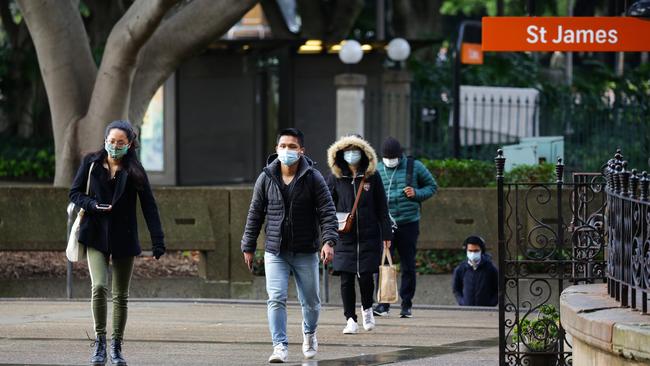
Twelve months ago there were grave fears for rising unemployment on the back of a severe economic slump because of Covid-19 shutdowns.
Half way through 2021, it is clear that the Australian economy is doing much stronger than expected and fears of rising unemployment have been replaced by concerns about labour shortages.
Closing the borders has had profound effects on Australia’s once very open economy.
Australians can no longer set out on overseas holidays and are being forced to spend their travel dollars at home, injecting new funds into regional tourism.
At the same time, there is a new focus on the importance of manufacturing more goods locally.
The peak globalisation of supply chains era is over, from manufacturing to tourism and services.
The labour force once filled by backpackers, international students and skilled workers from overseas has all but dried up.
Scott Morrison bluntly told backpackers to go home last year, which most of them did.
With Australia’s borders not expected to open any time soon, potentially for at least a year, many skilled foreign workers have decided to move back home because of the long-term difficulty in seeing their families.
Others overseas who, in the past, would have jumped at the chance of spending a few years working in Australia are not coming for the same reason.
This week’s Intergenerational Report has given an insight into the implications of a closed door Australia with a lowering of population expectations and predictions of a smaller and older workforce. The issue is particularly urgent for sectors such as agriculture where farmers have not been able to get enough workers to harvest their crops.
But if Australia is planning to keep its borders closed or even partly closed for some years, it is an issue that specific industry sectors, employers and policy makers would need to focus on in detail.
It is a shift that requires a rethinking of the labour force and attitudes to workers – from one where employers had the upper hand last year to one where they have to rethink their attitudes this year if they want to retain or recruit talented staff.
Specialist visas for agricultural workers appear to be the most urgent issue. This is now being addressed by the government but it remains to be seen how substantial and how effective the current plans will be.
More work will need to be done in matching labour demands in some geographical areas with skills held by Australians in other areas.
With borders now closed for more than a year, the impact is becoming more pronounced in other areas less evident, including white collar sectors.
Australia has working holiday agreements with many countries including Britain and the US, which have often filled mid-level professional jobs with some, such as those from Britain, often deciding to stay on in Australia for the long term.
Big white collar employers, such as accounting firms, which were laying off staff last year and would have benefited from access to skilled foreign professionals, are becoming more focused on ways to retain good staff.
Smart mid-level professional workers, who feared for their jobs last year, are starting to think of job hopping for a better deal.
The latest survey of industrial trends by the Australian Chamber of Commerce and Industry and Westpac, released this week, provides more insights into the structural forces at play in the Australian economy of 2021.
The survey’s composite index of activity shows an increase to 63.1 in the June quarter, up from 59.4 in the March quarter, 48.7 in the December quarter and a low of 24 in June last year as a result of Covid driven shutdowns.
“Conditions are expanding at a brisk pace,” it said. “Output and new orders are rising at the fastest rate since late 2018/ early 2019.
“The rebound is evident across manufacturing, benefiting from positive spill overs from other sectors. The construction industry continues to pick up as low interest rates and the HomeBuilder scheme support housing demand.
“Equipment investment has also lifted from the federal government’s tax incentives.”
The survey noted that the big challenges facing manufacturing and broader industry are shortages of material and labour.
The upbeat outlook for industry as evident in the survey, it said, “suggests the labour market” would “continue to heal”.
The survey is a microcosm of broader Australia.
In the June and September quarters last year, it noted, employers were laying off workers.
The picture changes dramatically in 2021 with employment in manufacturing up 12 per cent in March with a net 18 per cent of firms having hired more staff in the June quarter. “Expectations of future employment were firmly positive,” it said. “Currently at a series high, a net 21 per cent of firms plan to expand their workforce.”
There is a similar picture on overtime shifting from negative in the middle of last year to increasing rates of overtime in the March and June quarters.
More firms reported that it was harder to find labour. “When asked to identify the factors limiting output, ‘labour constraints’ were reported at levels not seen since December 2007,” it said. “Border closures may be hindering firms’ ability to meet their hiring intentions.”
With the Morrison government shy on long-term planning as it approaches the next election, this is an issue that industry sectors need to address, arguing strongly in Canberra for more specialist worker visas and other policies that will help match labour supply with demand.
Employers in labour short sectors need to rethink their attitudes to staff and remuneration.
Australia in June 2021 is also providing a window to future employment challenges – how to cope in an era of fewer and older workers, and in an era when mid-level workers, who have grown up in a time of no employer loyalty and drop-of-the-hat lay-offs, know all too well how to job hop.








What a difference a year makes.